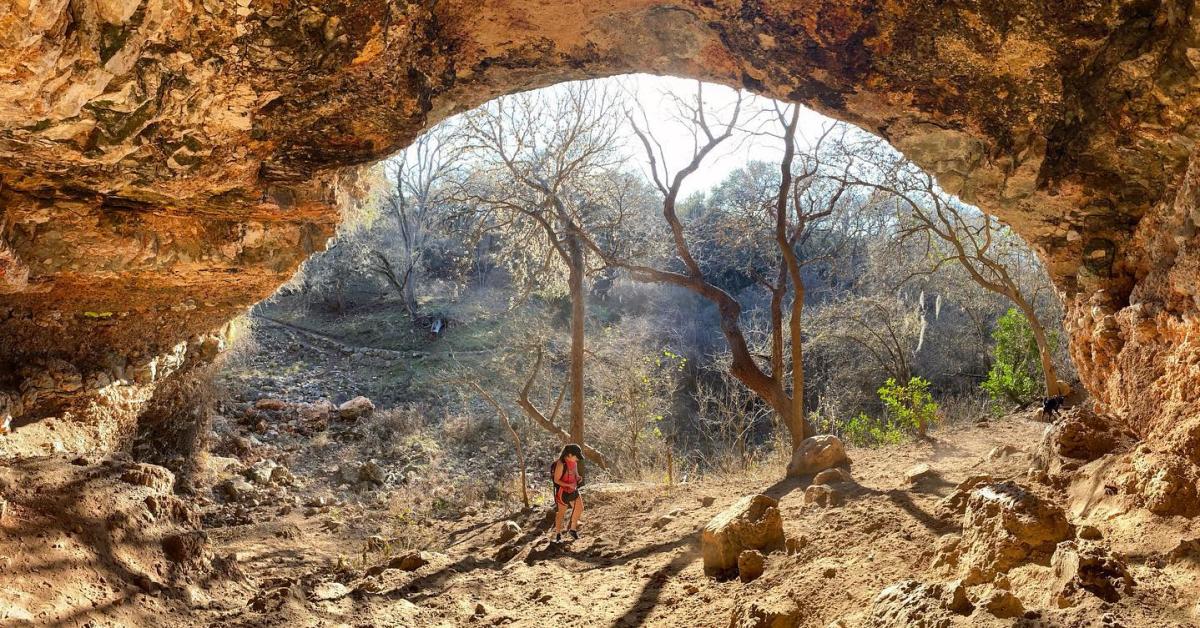Indigenous Peoples' Day is a great time to honor, learn about, and celebrate San Marcos’ first residents and the Indigenous community who call San Marcos home today. The Sacred Springs Powwow, public art, photography exhibits, remarkable artifacts, and more - San Marcos wouldn’t be the place we all know and love without our diverse and extraordinary locals.
HONORING NATIVE AMERICAN HISTORY
The Spring Lake area in San Marcos has been considered one of the longest continuously inhabited sites in North America. In fact, artifacts have been found in the area from every known period of human habitation leading back to the Paleo-Indian era more than 12,000 years ago. According to the Indigenous Cultures Institute, as many as 600 Native American groups lived in central and southern Texas and northeastern Mexico when the Spanish first arrived. This community of Indigenous people is collectively known as Coahuiltecans. It was not until the late 1600s, that Central Texas was explored extensively by the Spanish. The increase in foreign expeditions had a dramatic and negative effect on the Native American community through disease, internal turmoil, and a dramatic decline in population.
Some of the Coahuiltecan community today celebrates the ancestors that came before and is dedicated to preserving their rich history, culture, and traditions. The Indigenous Cultures Institute, based in San Marcos, works to preserve the cultures of the Native Americans indigenous to Texas and northern Mexico. They host the Sacred Springs Powwow every fall, host youth camps, support sacred sites, help with the repatriation of ancestors' remains, and have recently launched the Coahuiltecan Language Program to revive the Coahuiltecan language.
The Meadows Center
The Meadows Center for Water and the Environment is a research and education facility on Spring Lake, the headwaters of the San Marcos River. As mentioned, Spring Lake has been a popular spot for visitors and residents for a very long time (more than 12,000 years). The San Marcos Springs that create the lake are considered sacred by some as they are believed to be one of the four springs depicted on the White Shaman Panel which has elements of the creation story of the Coahuiltecan people. The area has gone through quite a transformation over the years and excavations of the site accumulated a treasure of artifacts. There are some of the found artifacts on display in Discovery Hall at The Meadows Center. Texas State University also has a digitized account of some of its archaeological projects in the area. Take a Glass-Bottom Boat Tour to see the Sacred Springs for yourself and learn more about the history and ecological significance of the area.
The Wittliff Collections
Edward Curtis – Treasures of The North American Indian Exhibit
In 1906, Edward Curtis secured a generous grant from J.P. Morgan to document Native American communities and preserve their traditional ways. With the Indigenous population mostly confined to reservations at this time, Curtis believed it crucial to chronicle their culture before it vanished.
His monumental project, "The North American Indian," spanned from 1907 to 1930. It comprised 20 volumes, capturing more than 100 Indigenous languages, stories, songs, and stunning photographs. The Wittliff Collections has a selection of framed prints from these volumes on display.
Though “The North American Indian” project created iconic images, there is controversy around his work. He retouched negatives and reused clothing, raising accusations of "fakery." Critics argue he romanticized Native Americans while erasing Western influence, a stark contrast to their forced assimilation. However, some Native Americans today defend Curtis' images as they serve as unique glimpses of their ancestors and, importantly, grant dignity to subjects who often lacked it in their daily lives.
CELEBRATE INDIGENOUS ART
The Guardians of the San Marcos River
601 S CM Allen Pkwy
Guardians of the San Marcos River by Thom Rogers depicts a creation story attributed to the Coahuiltecan people as well as the five spirit guardians of the river. Some believe the creation story that spirit guardians, in the form of animals, guided the Coahuiltecan ancestors from the spirit world and into the physical world through the San Marcos Springs. Each of the six panels features designs by San Marcos High School students.
Before Us - Mermaid March
501 E Hopkins St
Diana Weems collaborated with the Indigenous Cultures Institute to get the Native American design of “Before Us” just right. The use of Native American folklore and imagery is used to depict the story of the creation of the Coahuiltecan people. The story says, “In the beginning of humanity, we, The People were spirits that wandered the Underworld. We emerged from the Sacred Springs and were guided by our guardian spirits: Deer, Eagle, Jaguar, Wolf, and the Waterbird.”
Celebrate Diversity Our Common Thread
110 E. Martin Luther King Dr
Just behind the Crossroads Memorial is the mural Celebrate Diversity Our Common Thread. The piece was created by local artist, Robert Jones. The beautiful mural honors the many cultures of San Marcos. There are interactive QR codes throughout the mural identifying civil and social rights advocates within the San Marcos community. The piece was commissioned from The Downtown Association, Dunbar Heritage Association, Centro Cultural Hispano de San Marcos, and the Indigenous Cultures Institute.
Indigenous Heritage Mural In Progress
630 E Hopkins St
There’s a new mural going up on the side of the City Hall Complex that celebrates the Indigenous heritage of San Marcos and is painted by Indigenous artist, Ernesto Hernandez.
Indigenous Peoples' Day Events
Photo by: @jessicaxaponte
TAKE SOME TIME TO REFLECT
We encourage you to take some time to relax and reflect on the rich history and vibrant culture of the Indigenous community. This is a great time to hit the trails, go for a leisurely walk, dip a paddle in the San Marcos River or just find a quiet place to sit for a while and connect with nature. As you enjoy the natural beauty of San Marcos, please help us keep it clean and thriving for future generations.





